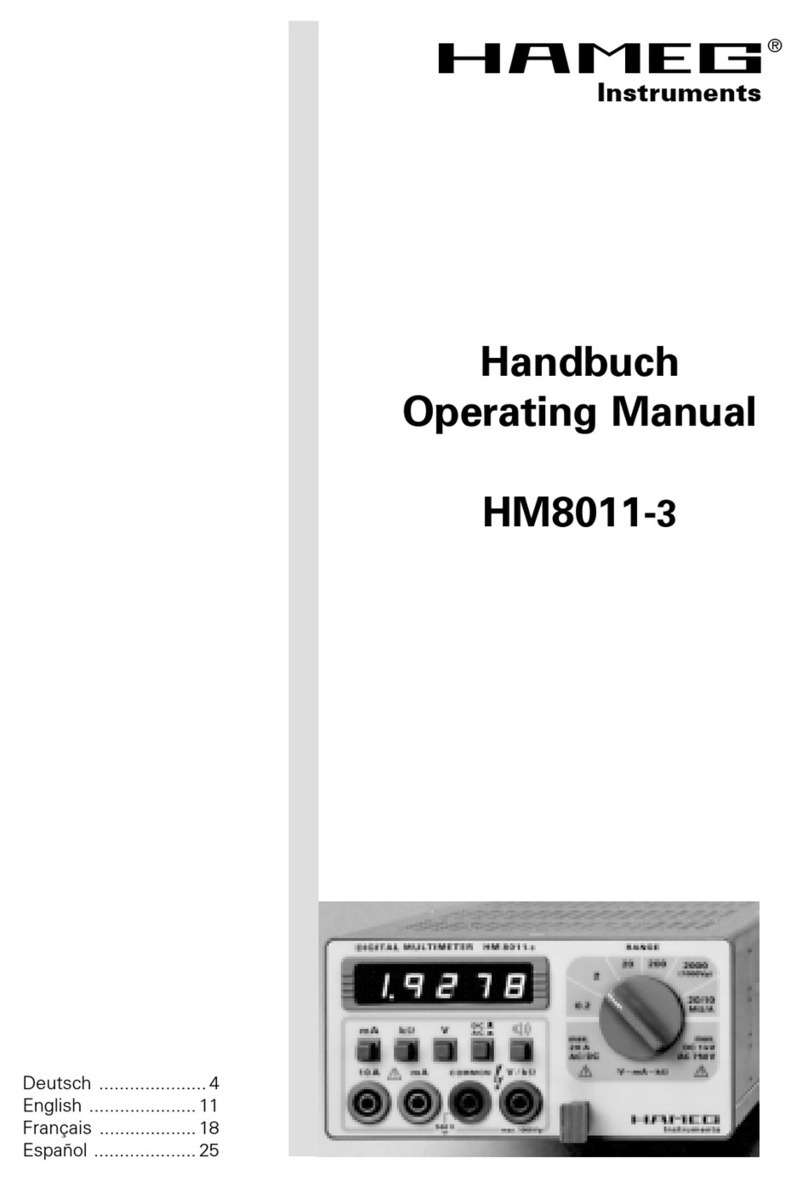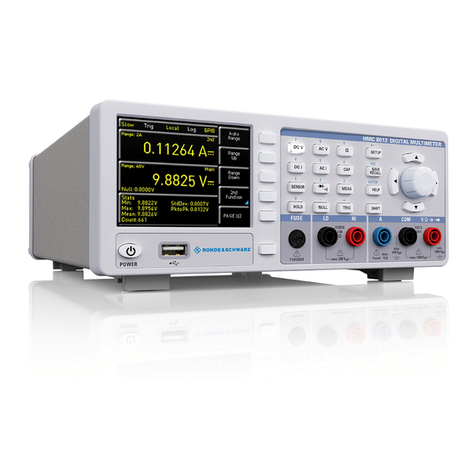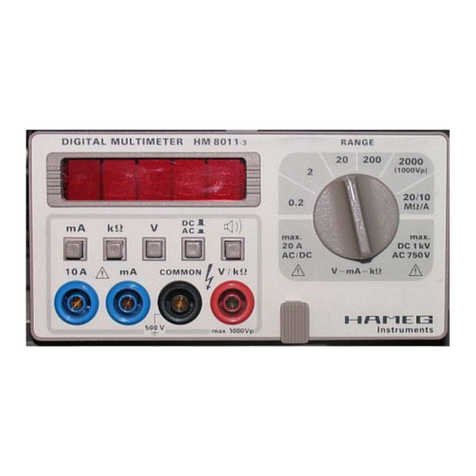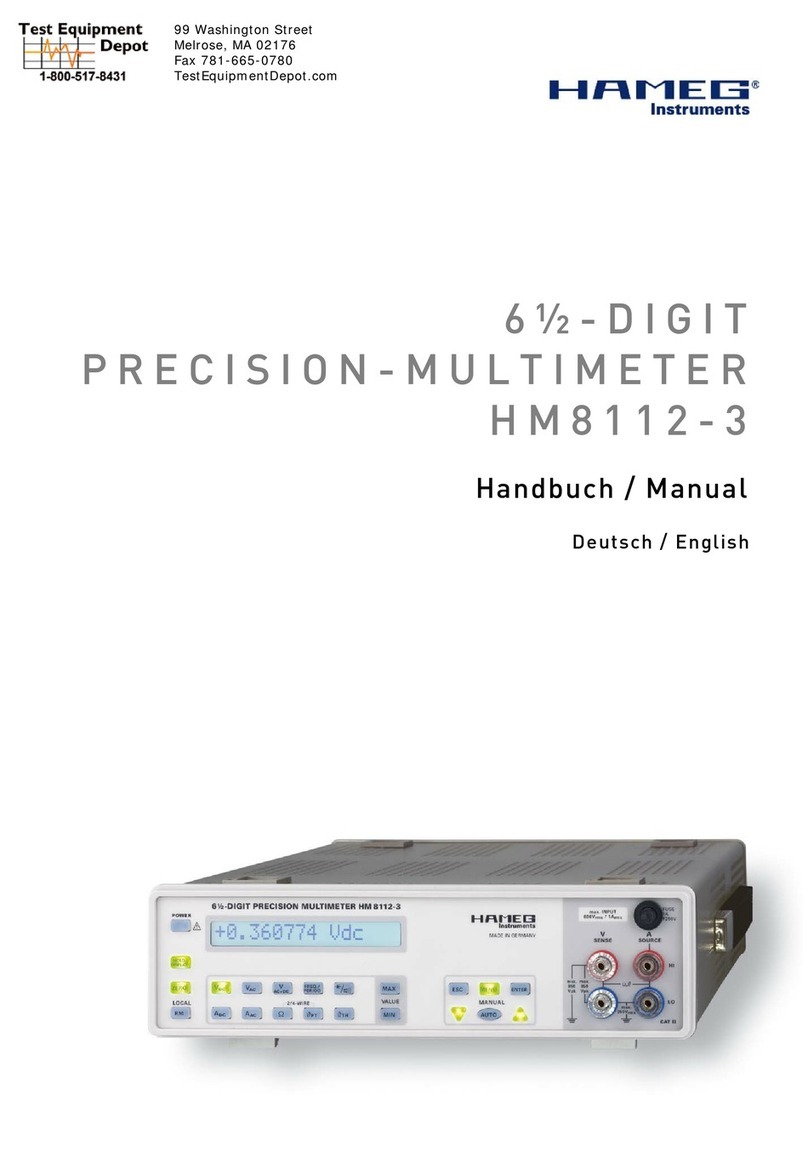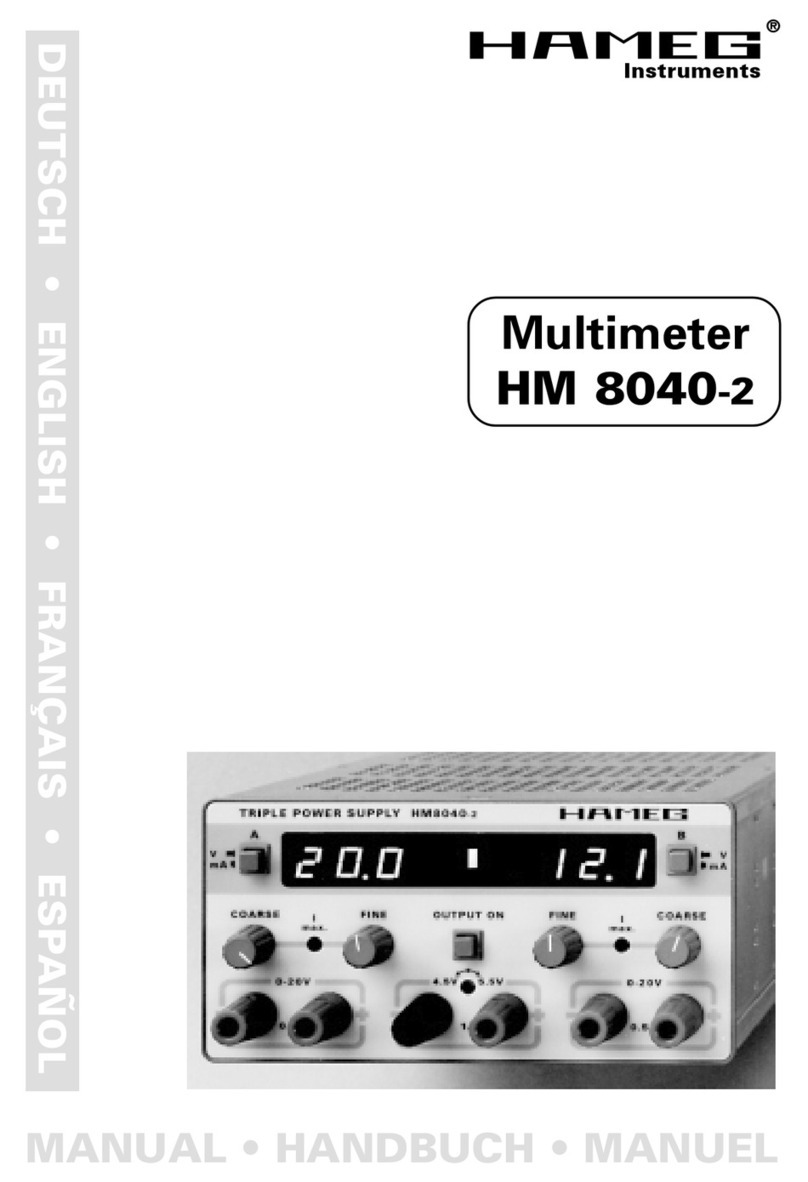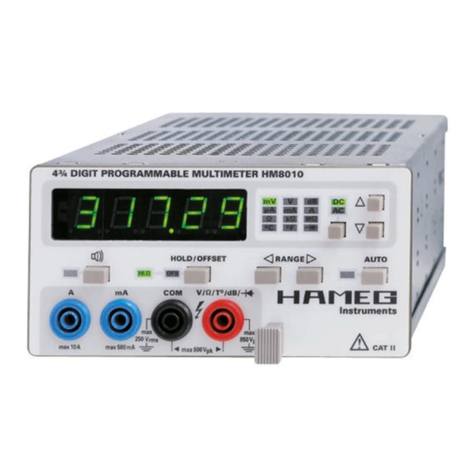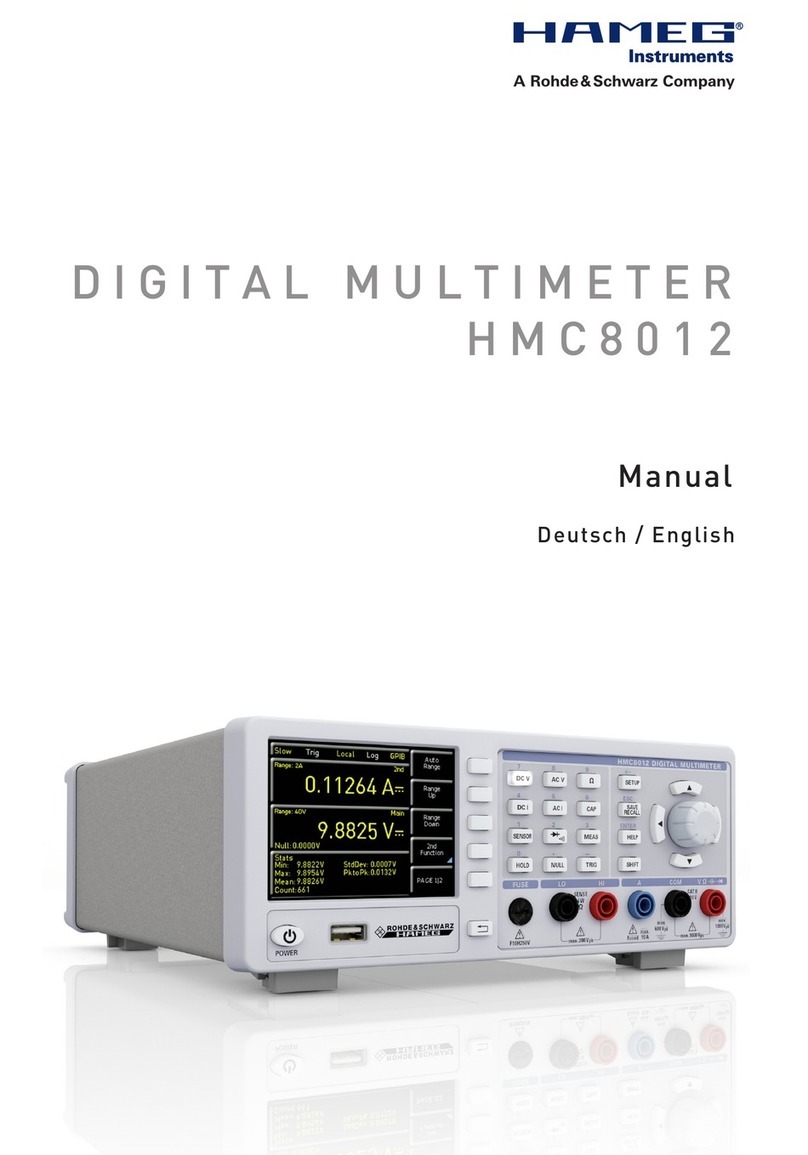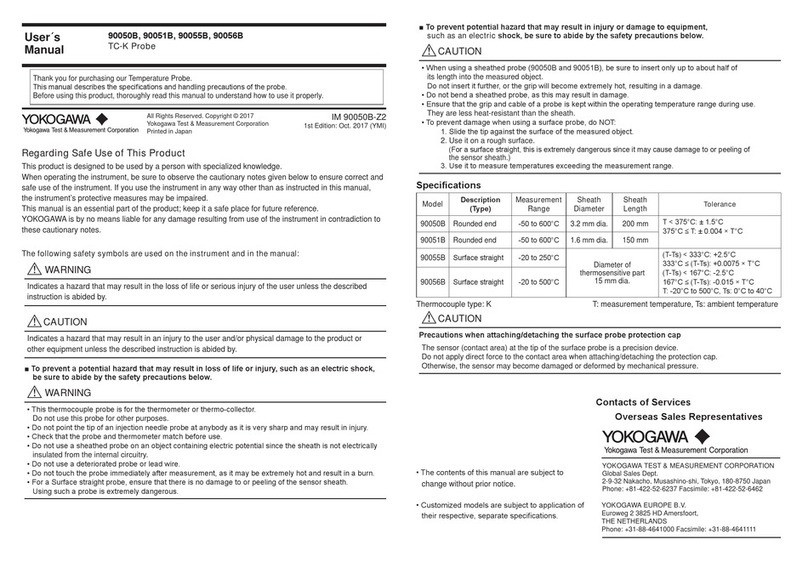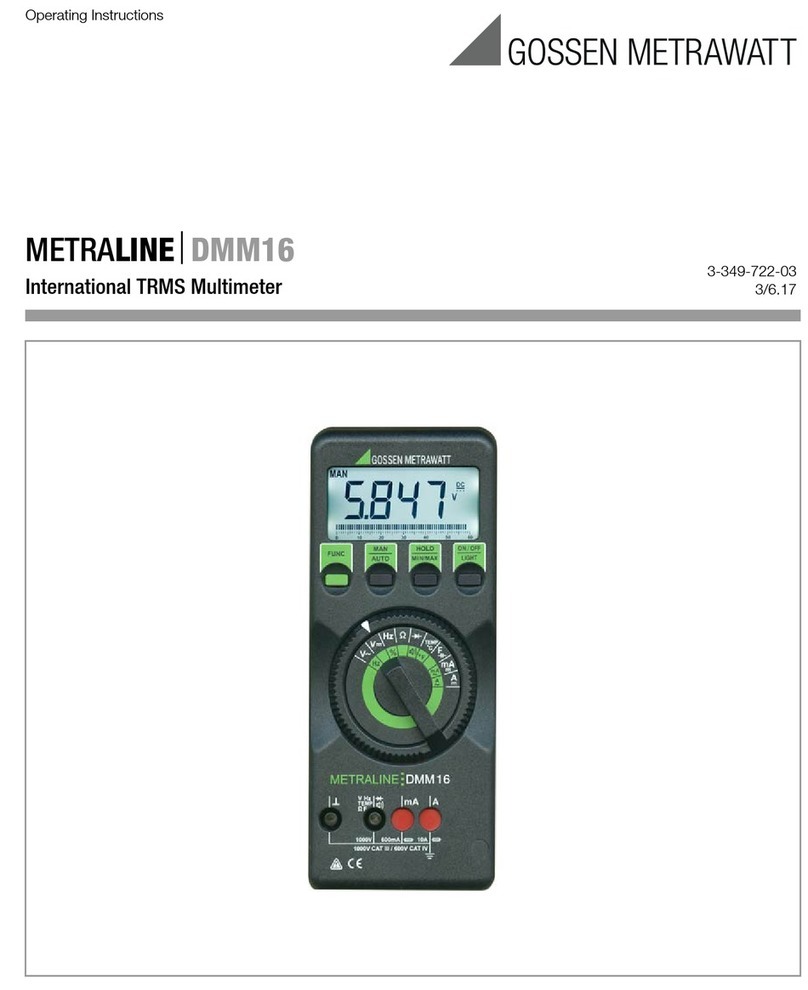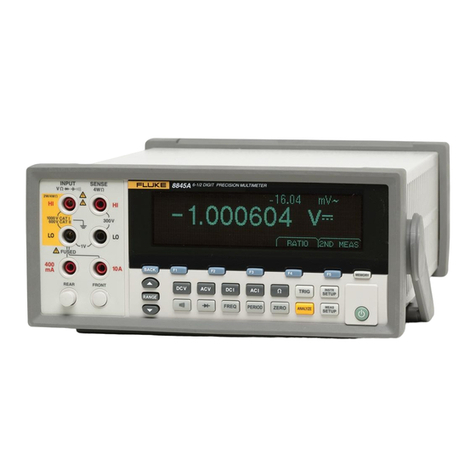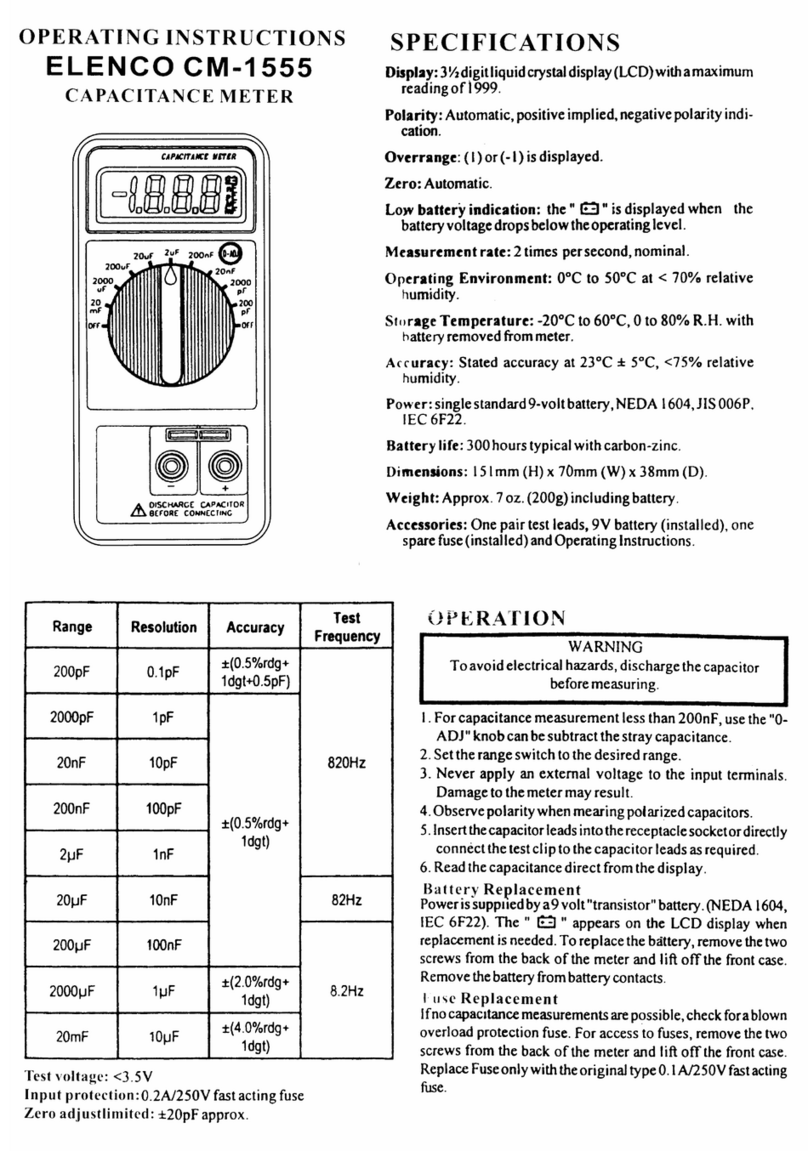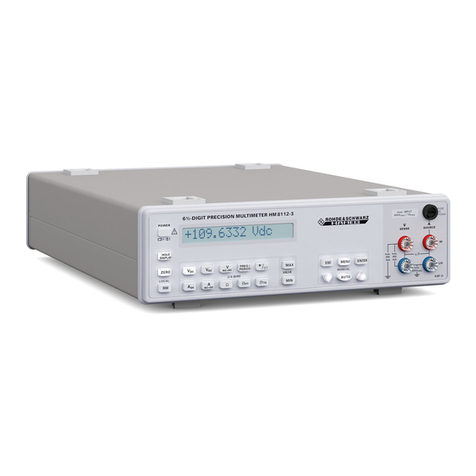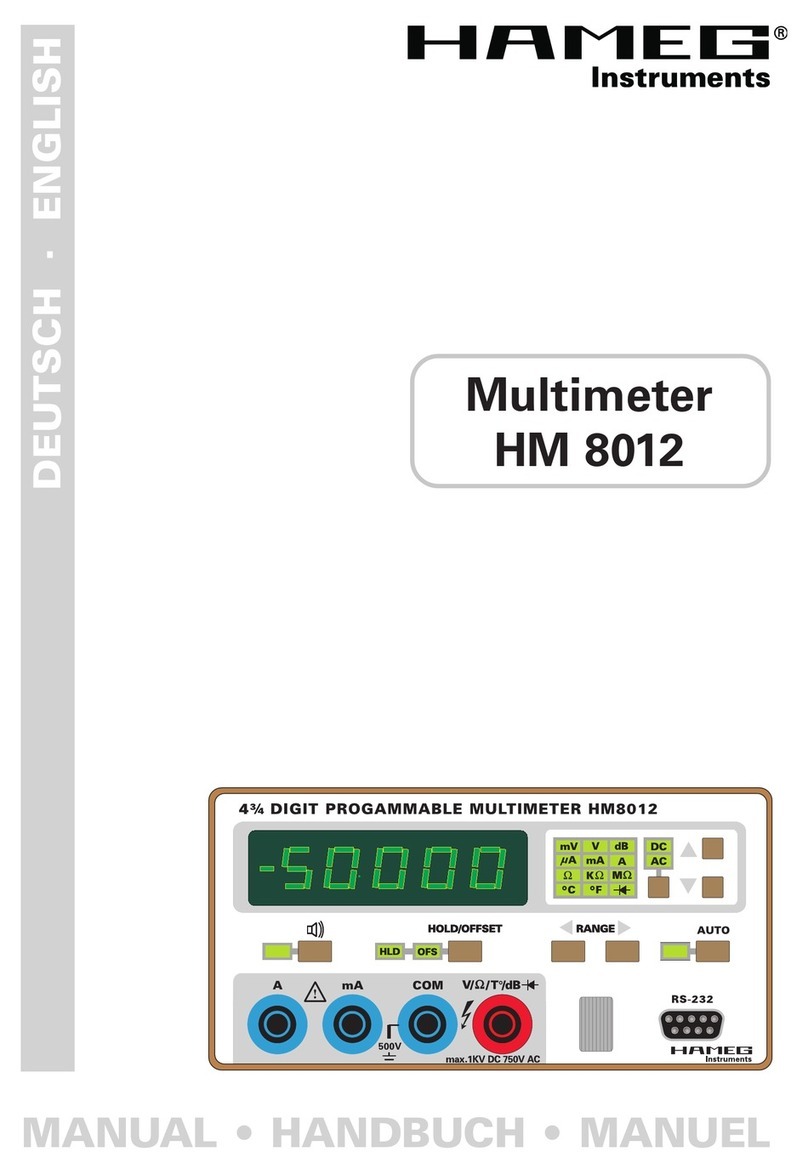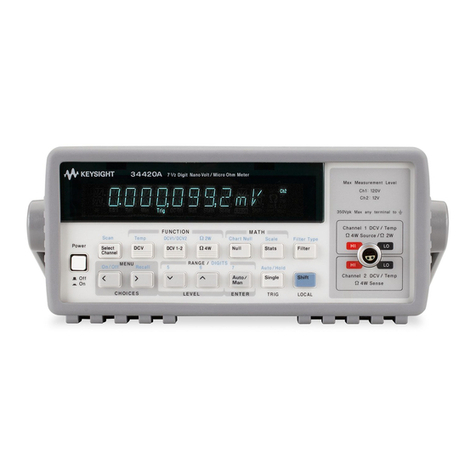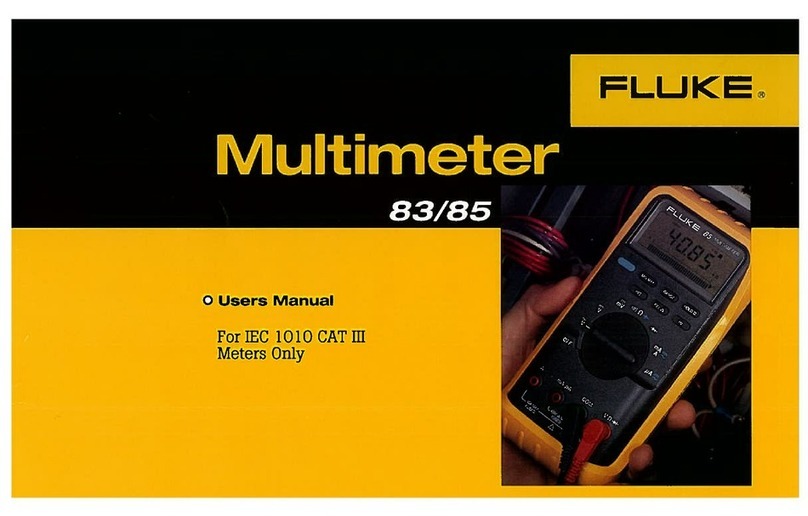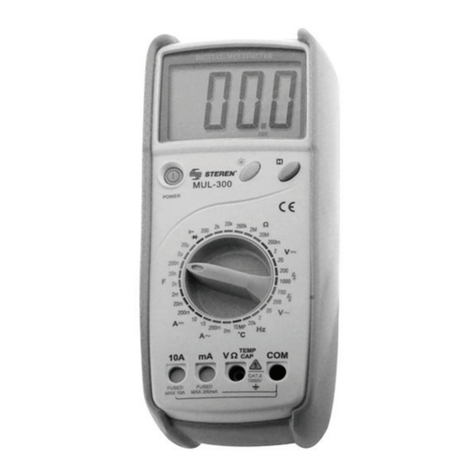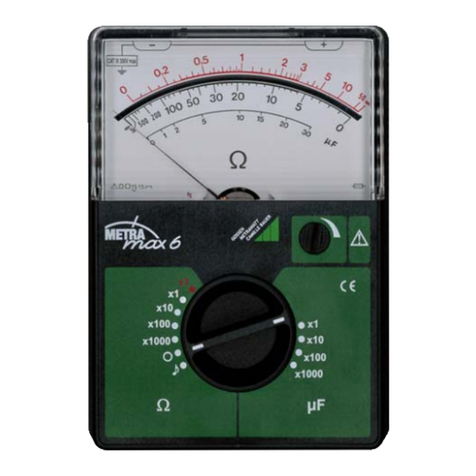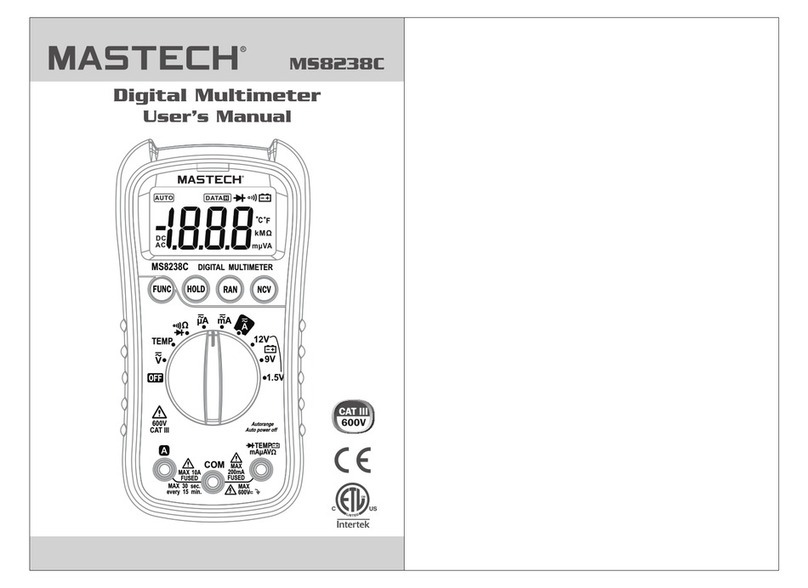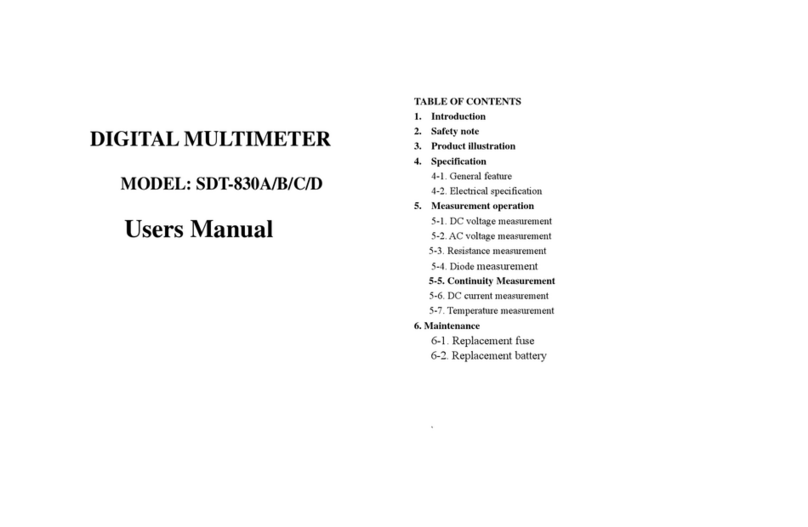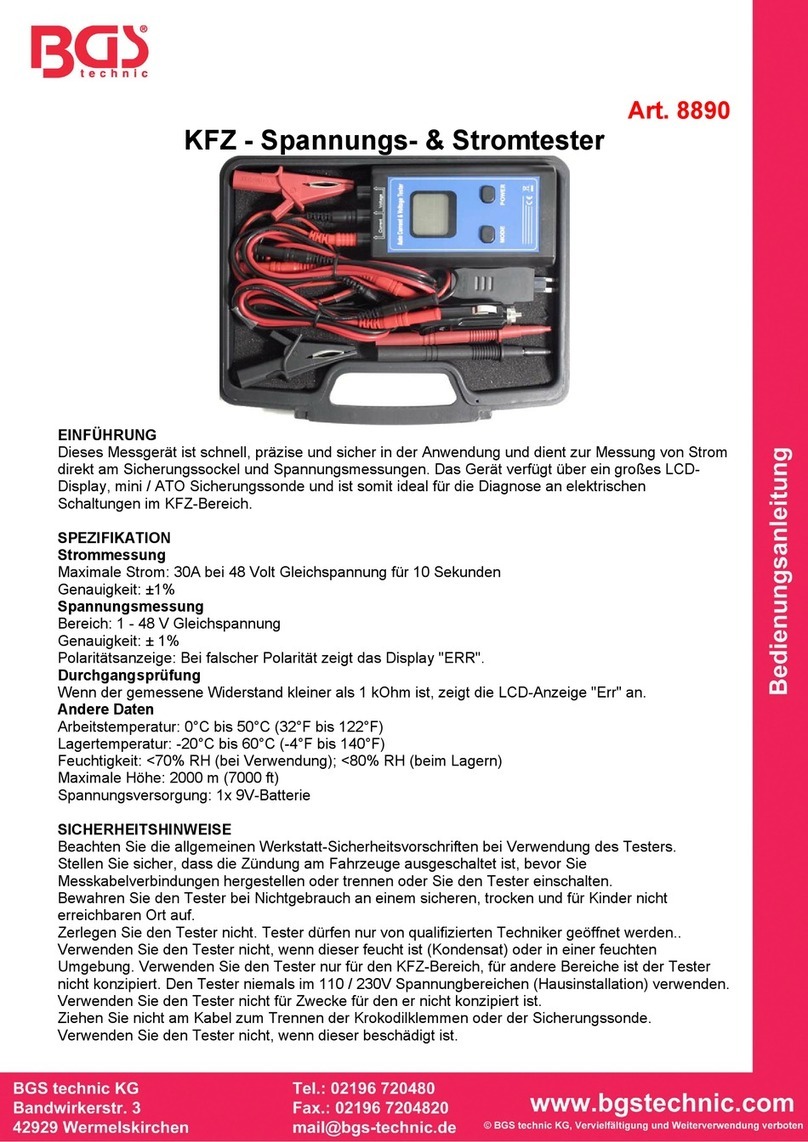
3
HAMEG Instruments GmbH • Industriestr. 6 • D-63533 Mainhausen • Deutschland Subject to change without notice
Geschäftsführer: Dipl.-Ing. Holger Asmussen, Dipl.-Ing. Andre Vander Stichelen • AG Offenbach am Main HRB 41200
1
HAMEG Instruments GmbH • Industriestraße 6 • D-63533 Mainhausen Subject to change without notice
Geschäftsführer: Dipl.-Ing. Holger Asmussen • AG Offenbach am Main HRB 41200
Firmware Version: 01.020 and later
English
SCPI Programmers Manual
HMS Series
1
HAMEG Instruments GmbH • Industriestraße 6 • D-63533 Mainhausen Subject to change without notice
Geschäftsführer: Dipl.-Ing. Holger Asmussen • AG Offenbach am Main HRB 41200
Firmware Version: 01.020 and later
English
SCPI Programmers Manual
HMS Series
HMO352x, HMO2524
HMO72x ... HMO202x
Firmware Version: 03.00 and later
English
:ACQuire
:CHAN1OFFSet
:DISPlay
:HCOPy
*ESR?
*OPC?
:LOGic:SIZE
:MEASure
:POD1 :SYSTem
*SRE?
SCPI ProgrammersManual
HMO Series
SCPI Commands HMC8012
1. Introduction / Basics
This chapter provides basic information on operating an instrument via remote control.
1.1 Remote Control Interfaces
For remote control, LAN / USB (standard interface) or GPIB (optional interface) can be used. The optional GPIB inter-
face has its own interface module slot on the rear panel of the HMC8012.
Within this interface description, the term GPIB is used as a synonym for the IEC/IEEE bus interface.
SCPI (Standard Commands for Programmable Instruments) SCPI commands - messages - are used for remote control.
Commands that are not taken from the SCPI standard follow the SCPI syntax rules.
1.1.1 USB Interface
In addition to a LAN interface, the HMC8012 includes a USB device port. For this interface, the user can select if the
instrument is accessed via virtual COM port (VCP) or via USB TMC class. The traditional version of the VCP allows the
user to communicate with the HMC using any terminal program via SCPI commands once the corresponding Windows
drivers have been installed. For the multimeter HMC8012, these commands are mostly compatible with the Agilent
multimeters 34401A and 34410A. Naturally, the free HAMEG software “HMExplorer” is also available for the HMC
series. This Windows application offers HMC instruments a terminal function, the option to create screenshots and to
read out the measured data from the HMC memory.
The modern alternative to the virtual COM port is to remote control the HMC8012 via USB TMC class. TMC stands for
“Test & Measurement Class” which indicates that the connected measurement instrument can be recognized without
special Windows drivers if VISA drivers are installed and that it can be used directly in corresponding environments.
The GPIB interface serves as model to the structure of the TMC design. A major benefit of the USB TMC class is that
by sampling specific registers the controlling software can determine if commands have been terminated and if they
have been processed correctly. In contrast, the communication via VCP requires analysis and polling mechanisms
within the controlling software which may significantly strain the interface of the measurement instruments. The TMC
status registers solve this problem with the USB TMC in the same manner as is the case with the GPIB interface for
the hardware, namely via corresponding control lines.
If you are using USB you need to install an USB driver, which can be downloaded free of charge from the HAMEG
homepage.
The available USB driver is fully tested, functional and released for Windows XP™ 32 Bit, Windows Vista™ or
Windows 7™ both as 32Bit or 64Bit versions.
The USB interface has to be chosen in the multimeter and does not need any setting.
If the virtual COM port will be used, you have to install the virtual COM port part of the HMC8012 USB driver.
The virtual COM port (VCP) will be activated in the PC device explorer.
1.1.2 LAN Interface
The settings of the parameter will be done after selecting the menu item Ethernet and the soft key Parame-
ter. You can set a fix IP adress or a dynamic IP setting via the DHCP function. Please ask your IT department for the
correct setting at your network.
IP address
To set up the connection the IP address of the instrument is required. It is part of the resource string used by the pro-
gram to identify and control the instrument. The resource string has the form:
TCPIP::‹IP_address›::‹IP_port›::SOCKET
The default port number for SCPI socket communication is 5025. IP address and port number are listed In the „Ether-
net Settings“ of the HMC8012, see also: chapter 1.2.2,“Configuring LAN Parameters“, on page 4.
